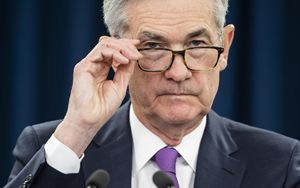(Finance) – The wait for the company’s decisions is growing Federal Reservewhich will announce the monetary policy decisions. In reality, no actions are expected interest rateswhich will remain for now unchanged and, as happened with the ECB, the confirmation of an anchor of the decisions of the Board to the outgoing data in the next months.
The Fed’s about-face
Meanwhile, analysts at Pictet Asset Management point out that “there is a key event which determines the current view: the about-face by the American central bankwhich occurred at the FOMC meeting last December 13, when the Fed signaled with its dot plot three rate cuts of 25 basis points each during 2024 (compared to a cut indicated in the September FOMC). The market prices six today, having already begun the recovery in the face of encouraging macroeconomic data relating to inflation.”
Markets still too “euphoric”
“We are in a position to be able to take care ofthe risks (downside) for growth and not only those (upside) for inflation“Powell said in the press conference at the end of the mid-December meeting, anticipating a return of monetary policy to the dual target of inflation and growth.
“The US central bank has returned to the dual mandate (monetary stability and full employment) with a dramatic coup at the end of 2023, which triggered a rally in the short-term part of the curve”, underlines Pictet AM, adding “on these deadlines the pricing is still euphoric (with 6 cuts incorporated) medium to long maturities of Treasuries offer more value. On the balance sheet front, the QT is compensated by the shift of monetary masses to liquidity products: further good news.”
Furthermore, Pictet AM believes “the market more correctly priced with respect to the inflation trend given the levels to which it has returned today. In addition, by applying the Taylor rule to the consensus projections for inflation (Core PCE) and those for unemployment, the current situation would justify even lower rates of the current ones. For example, Taylor Rule estimated Fed Funds would be 4.63% today to fall to 3% at the end of 2024“.
What to expect for 2024
“2024 will be the year when look for value on the long end of the interest rate curve, especially in the US. – explain the analysts – Europe is on average expensive but, if you have to choose, short maturities are better”.
“On the bond front we can observe a rather homogeneous trend in the yield rate curve, although short maturities depend mainly on monetary policies, while medium and long term ones are influenced by market mechanisms less reactive to interest rate movements. Overall, in the last quarter there was a uniform movement of the same size across the entire curve, with a drop of 75 basis points, equal to 1% from the peak; a movement, therefore, particularly relevant”.
“In light of the FED’s reversal of course, and considering that the market has already priced six cuts instead of the promised three“, Pictet analysts believe that “the short part of the American curve does not offer much value (unless an imminent recession) and may be susceptible to corrections”. “On the other hand, we instead see value on the long part – they add – whose fair value we estimate to be approximately 3.5%, achievable between now and the end of 2024; value composed of 0.5-1% neutral rate, 2-2.5% inflation and 0.5% Term Premium”.
What will happen to QT (Quantitative Tightening)?
For Pictet AM “it is now possible that, as can be read from the December FOMC minutes, an announcement will be made QT reduction“, as also confirmed by the President of the Dallas Fed Lorie Logan at the beginning of January, taking into consideration “the possible negative implications on the circulation of liquidity once the cushion of MMFs invested in RRP has been exhausted. This bearing today amounts to 700 billion dollars of reverse repo and Logan’s suggestion is to slow down its erosion in order to give the financial system time to better adapt to a liquidity regime that is no longer abundant”.
(Photo: Salvatore Cavalli)
